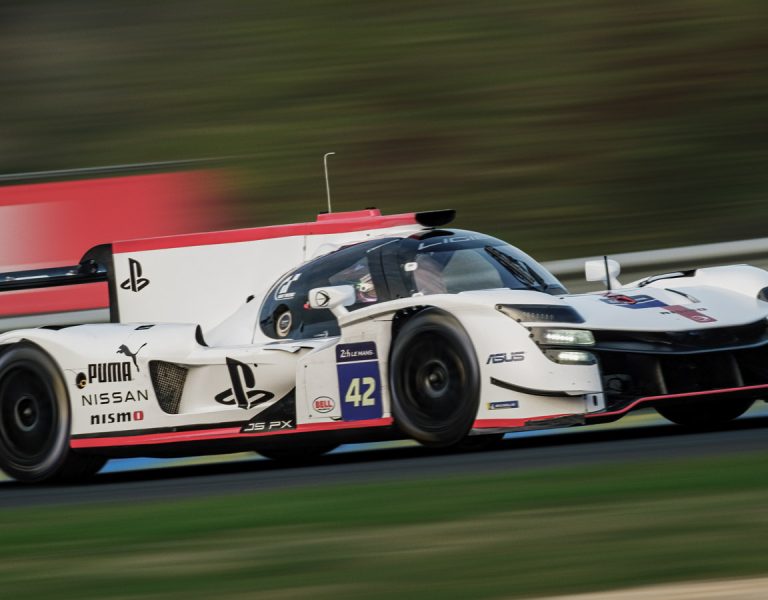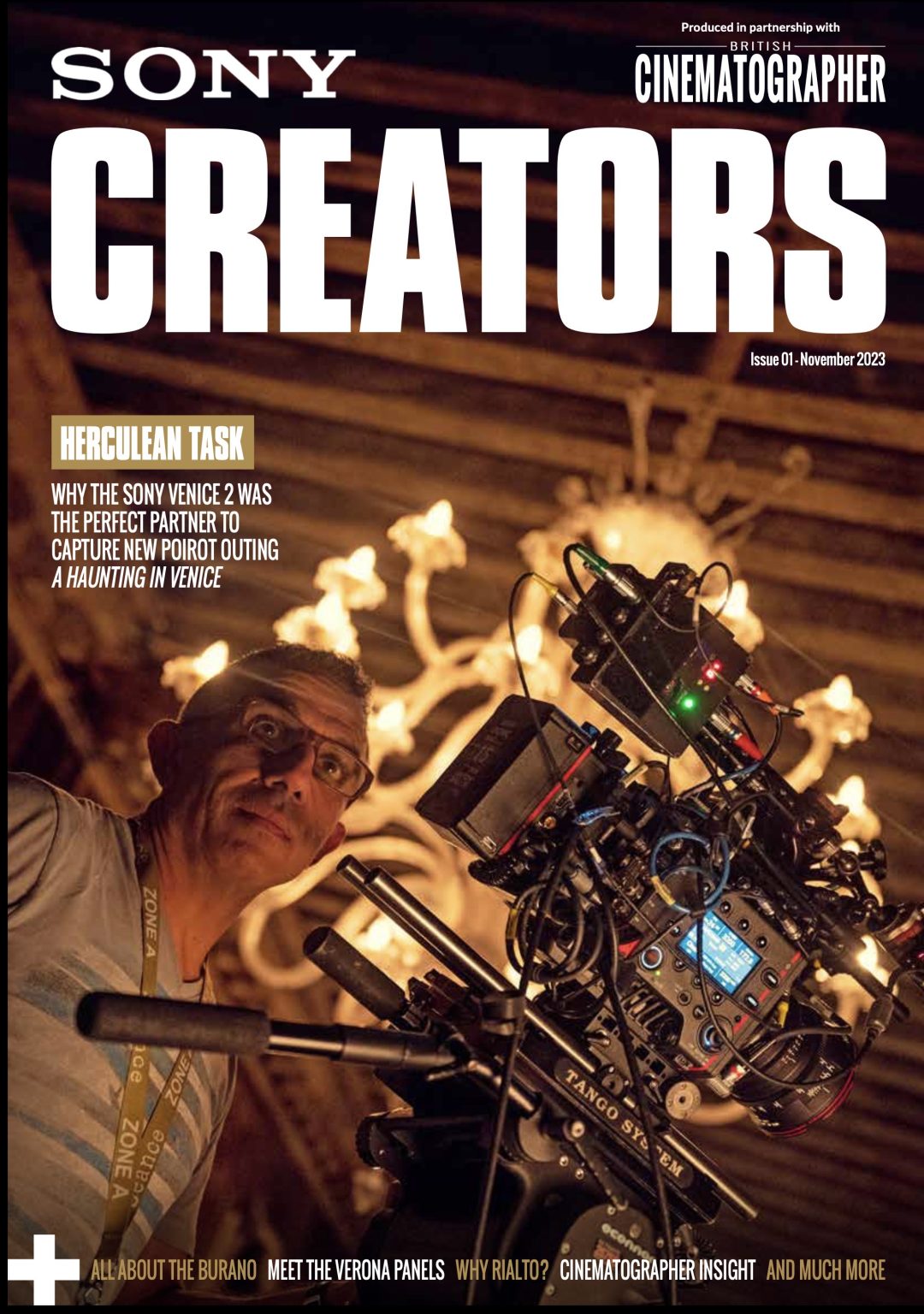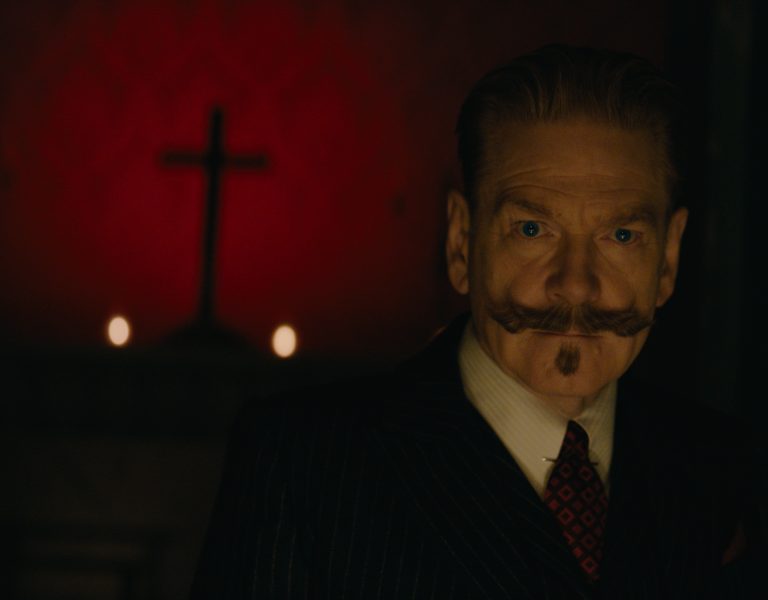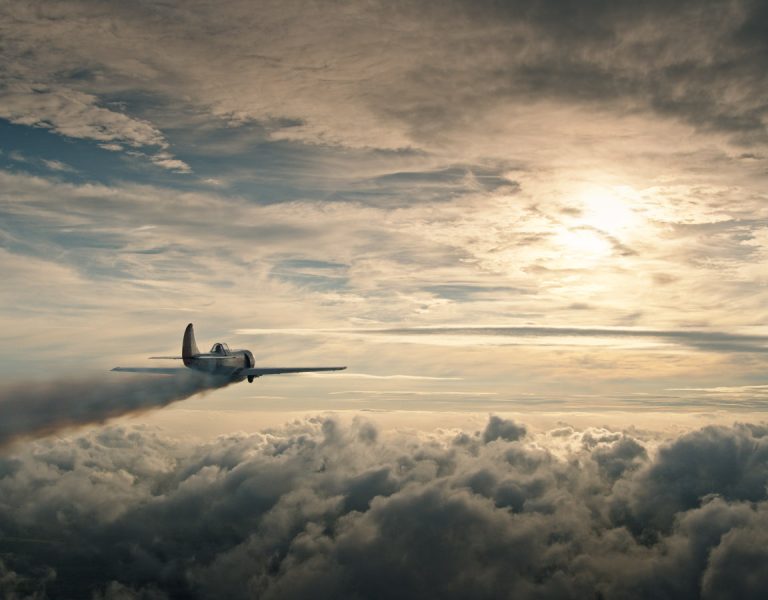SINGLE OPERATORS SOAR WITH SONY BURANO
Sony has announced a new digital cinema camera, the BURANO. With an 8.6K full-frame sensor, internal 16-bit X-OCN LT recording and both PL and E-mount support, the BURANO is aimed at small crews and single operators.
At a Pinewood Studios rendered eerily quiet by the strikes, British Cinematographer joined journalists and influencers such as Philip Bloom and Filmmakers World’s Emanuele Giannini for the launch of Sony’s newest camera. Pinewood is the home of the corporation’s Digital Media Production Centre Europe, a space to demonstrate technology and deliver training, which celebrates its tenth anniversary this year.
Across the road from the DMPCE lies the John Barry Theatre, where Heeseok Chung (Deputy Head, Pan European IP&S) set the stage for the new Sony camera. It’s the latest addition to their Cinema Line, which traces its origins back to the 1990s when George Lucas approached the company to build a digital cinema camera for his Star Wars prequels. The result was the F900, and Star Wars Episode II: Attack of the Clones made history as the first digital blockbuster.
Since then, Sony’s Cinema Line has developed through the F55, F65 and two versions of the highly popular VENICE, this last being used to capture such productions as Gran Turismo, Top Gun: Maverick and Star Wars: Andor. Sebastian Leske (Head of Business Development, Cinema, Europe) describes their new offering as a melding of VENICE aesthetics with the run-and-gun mobility of the FX9.
Encased in a magnesium alloy body, the Sony BURANO features an 8.6K full-frame sensor with a native 17:9 resolution. At 8K resolution it can shoot up to 30fps, while double this frame rate is possible in 6K mode (down-sampled in camera from 8K). Alternatively, the sensor can be windowed to Super-35, resulting in a 4K image of up to 120fps. Currently all recording modes are 16:9 or 17:9, with 1.3x and 2x de-squeeze support. (1.5x de-squeeze is planned for a 2024 firmware update, along with S700 ethernet protocol support for multi-camera production.)

The BURANO’s recording formats include XAVC and XAVC H using the MPEG-H HEVC/H.265 codec, and X-OCN LT for compressed raw files. Still boasting 16-bit colour, X-OCN LT is about 40% lighter on media than ST or XT; 6K footage has a comparable file size to 4K ProRes. 8K recording, meanwhile, consumes approximately 1TB per 45 minutes. The camera has a pair of CF express Type B slots, and Sony plans to release two new compatible cards in early 2024, a 1TB and a 2TB version, both with write speeds of 1750MB/s.
The BURANO features the same colour science as the VENICE, and like that camera offers dual base ISOs of 800 and 3200. Sony measures the camera’s dynamic range at 16 stops in S-Log3. Four optional cinematic looks can be applied in camera including “vintage” and “teal and orange”.
The PL lens mount can be removed to reveal a Sony E-mount, allowing users to access not just a huge range of cinema glass but also the 72 E-mount lenses currently available. The camera features AI-assisted autofocus, and the operator can select the subject they want to be sharp by tapping on the fold-out screen, though this does mean removing the viewfinder loupe.
Perhaps the BURANO’s most groundbreaking feature is its combination of in-body image stabilisation (IBIS) with electronic variable ND filters (0.6-2.1) – the first time that these two things have been present in a single camera, and the first time IBIS has been incorporated in a PL-mount camera. The floating sensor required by IBIS made “heat dissipation difficult”, and it was “an engineering challenge” to pair it with NDs, according to Sony engineers. The stabilisation technology draws on that developed for the Alpha™ range of mirrorless cameras.
Weighing in at under 3kg (1.4kg less than the VENICE 2), the BURANO is aimed primarily at single operators working in such fields as sport and natural history. All menu buttons have been placed on the operator’s side, with no controls on the right-hand side where an assistant typically works. Sony expects, however, that some drama crews working with the VENICE will adopt the BURANO as a B-camera due to its matched colour science and lower price point.
Sony’s GP-VR100 remote handgrip is compatible with the BURANO as well as the FX6. Taking on board feedback from filmmakers, the traditional ARRI rosette for positioning adjustment has been replaced by a simple push-button. The BURANO can also be fitted with an FX9-style top handle which has inbuilt electronics including an MR shoe and access to more audio inputs. A shoulder adapter with VTC mount is available and is easily interchangeable between the BURANO and VENICE, both cameras having the same screw position relative to the sensor. The BURANO can be controlled with the RM-1BP and RM-30BP LANC remotes, with a wireless solution planned for the future.
The presentation at the John Barry Theatre continued with a screening of three short films commissioned by Sony to put the BURANO through its paces. Soul of Light and A Day to Remember both focus on wildlife, while Human Wings is an extreme sport documentary. All three can be found on Sony Europe’s official YouTube channel.

Shot in France and the UK by Italian director-DP Paolo Sodi, Soul of Light takes places almost entirely at sunrise and sunset. It features stunning natural light and engaging close-ups of flamingos, tortoises, deer, and other animals, showcasing well the high resolution and colour depth of the BURANO. Shots of flamingoes flying were spontaneously captured handheld on a 24-70GM2 zoom lens, for which Sodi says the BURANO’s in-body image stabilisation was invaluable.
Behind-the-scenes photos show the camera operating happily with a fair sprinkling of rain on it. “I work a lot with rain. It worked perfectly,” says Sodi. (The BURANO’s ventilation system, like the VENICE’s, is completely isolated from the electronics.) “With this camera you think only about what you have in front. You don’t think about technical specifics.” He also praises the built-in monitor and the speed at which the camera allows him to work, particularly how quickly it powers on.
In the future Sodi would like to see the option of proxy recording extended to 24fps, not just 25, “but that’s a very small thing,” he adds. He has worked with the VENICE a lot and likes the feel of that camera on his shoulder, but believes the BURANO is ideal for a filmmaker working alone. “For my type of work, in future, this camera is perfect, and can work perfectly with the VENICE because of the same quality. It can work in X-OCN – okay, it’s LT – but a lot of quality. And on the card, you can record a lot of footage.”
A Day to Remember was an existing project which switched to the BURANO after Swiss filmmaker Chris Schmid was approached by Sony to try it out. Shooting in Zambia, Schmid was accompanied by just one assistant and a guide. He opted not to pack a back-up camera, despite being away from network signals if anything went wrong.
The film features footage of big cats, which are only active in the early morning and late evening, requiring a high ISO camera to capture effectively. A campfire scene shot at 12800 ISO also highlights the BURANO’s low-light sensitivity. “I think 50 per cent of the shots we did at [ISO] 3200,” says Schmid. “The full moon shot was more, it was 12800, but it’s very clean. Even if you have some noise, it’s nice noise, not very digital, more like film.”
Schmid reports that the BURANO boots in two or three seconds – “really useful for wildlife”. Working with a minimal camera build including a SmallHD monitor, he made use of the BURANO’s cache record function to ensure that he never missed an important moment.
Schmid enjoys using different crop factors and accordingly mixed full-frame and Super-35 PL lenses, while shots captured on a Tilta gimbal employed E-mount glass. The entire film was shot with auto-focus. Schmid highlights panning shots of zebras with foreground trees as a particularly impressive example of what the BURANO’s AF can do. He also praises the camera’s dynamic range, pointing to forest shots juxtaposing bright sunlight and deep shadows.
Human Wings, filmed over three days on three BURANOs, and prepped in a single week, is the work of director-DP Thierry Donard. His subject is Vincent Cotte, a world-record-holding wingsuit flyer who can reach speeds of over 150mph (280km/h). Being able to reliably capture Cotte soaring past – sometimes only a metre overhead – was a primary concern for Donard. “You don’t know how difficult it is to be a filmmaker and to miss a shot. I’m sick for three days, I’m sick of heart.”
The BURANO’s autofocus did not let Donard down. “We are able to shoot action we could never film before,” he says, adding that he knows few camera assistants who could have pulled the focus so accurately. He tried several angles that he knew would be hard to focus, and claims 95 per cent of them worked out. “You capture more footage and take more risk.” He explains that the camera allowed him to shoot tighter and with more movement than he would otherwise have dared.
Behind-the-scenes photos show that Donard is no stranger to risk, sitting on an assistant’s shoulders at the top of a cliff to capture one particular angle. He even took the risk of rigging a BURANO to Cotte in flight – something he didn’t tell Sony until afterwards! (Leske had wanted Donard to demonstrate the camera’s mobility, but this was “mobility at the next level,” the head of business development says with a chuckle.) Setting the camera up with autofocus and auto-ND, Donard reports that the flyers found it very simple to use.

Contrasted with these dramatic POVs, grand wide shots in Human Wings portray the flyers tiny against huge cliffs as they make their initial plunge, a testament to the BURANO’s resolution.
Of the ergonomics, Donard says, “It’s not too light. A lightweight camera is nice, but the movement is very important.” Like the other filmmakers showcased, he prefers a small camera rig, adding almost nothing to the out-of-the-box package. “Christmas trees on the camera is a problem for me!” he laughs.
Donard’s co-cinematographer Mateffy Istvan joins the conversation to discuss the camera as part of a technological trend which enables them to do more with less. “This is the democratisation of cinema,” Istvan claims. “The last four of five years, since we’re shooting on Sony, we basically reduced our crew size two times.”
“It’s better for the planet,” Donard chips in.
“Before we were travelling with 14 Peli cases!” Istvan says, adding that a backpack containing the camera, a couple of lenses and batteries is now all that’s required.
“I find the pleasure I used to find when I filmed on 35mm a long time ago,” Donard concludes. “I need to do more filming with this camera!”
The Sony BURANO will be available from spring 2024 with a list price of €25,000 (around £21,640).
Find out more here.
–
Words: Neil Oseman











